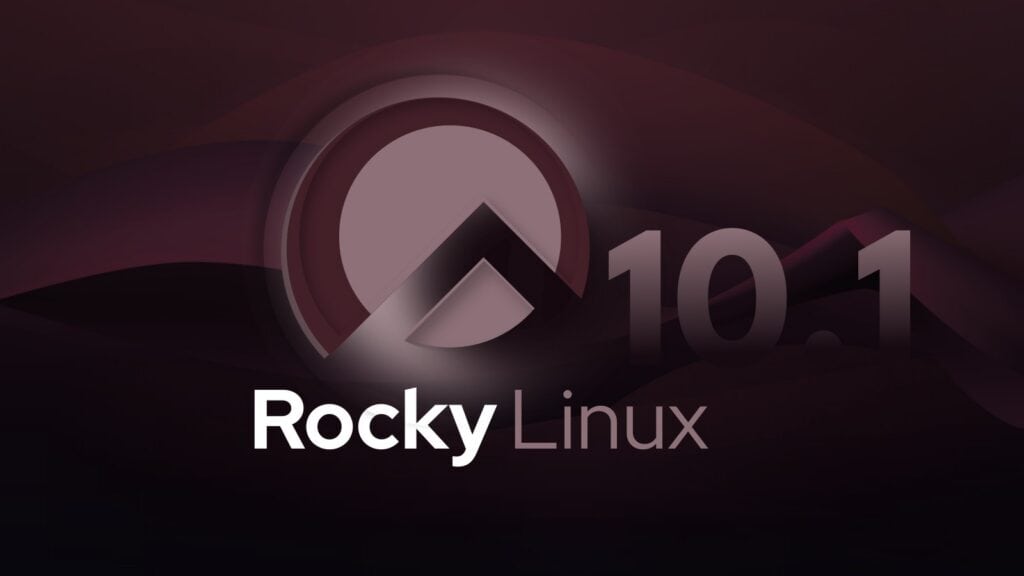Over five months after the major 10 release, powered by kernel 6.12 LTS, Rocky Linux announces the global availability of the first update in the series, Rocky Linux 10.1 (Red Quartz).
The update introduces systemd soft-reboot support, a feature that restarts userspace without reinitializing hardware. In simple words, this mechanism reloads services, daemons, and system state while keeping the kernel running, reducing downtime during routine maintenance and patching.
It’s highly recommended that administrators review the systemd-soft-reboot.service documentation before adopting it in production, as some subsystems still require traditional reboots for full stability.
Another component that takes a central place in this update is post-quantum cryptography. Building on the work introduced in 10.0, Rocky Linux 10.1 now prioritizes post-quantum algorithms over classical ones in OpenSSL and enables PQC across additional libraries and system-wide crypto policies. The default cryptographic profile now includes PQC, and related components such as GnuTLS also ship with expanded support.
Storage capabilities see important changes, too. XFS gains mounted-filesystem scrubbing via xfs_scrub and limited shrinking support through xfs_growfs. Plus, several drivers across the storage stack are being updated or replaced.

The release also updates major programming languages and runtimes. Rocky Linux 10.1 includes .NET 10, Node.js 24, OpenJDK 25, and Valkey 8. New compiler toolsets are available, including GCC 15, LLVM 20, Rust 1.88, and Go 1.24. The system toolchain itself has been refreshed with GCC 14.3, glibc 2.39, binutils 2.41, and Annobin 12.99.
It’s also important to note that, for x86_64 systems, Rocky Linux 10 standardizes on the x86-64-v3 microarchitecture. Hardware lacking these capabilities is no longer supported, and older 32-bit compatibility libraries have been removed.
Moreover, the distribution also continues to expand RISC-V support, including platforms such as VisionFive 2, SiFive HiFive Premier P550, and QEMU implementations, although kernel issues in 6.12.0-124.8.1 temporarily affect some RISC-V systems.
Installer changes in Rocky 10.1 include disabling the default root account, requiring the creation of an administrative user, and switching from VNC to RDP for graphical remote installation. In addition, the installer no longer accepts third-party repositories through the graphical interface, requiring inst.addrepo or Kickstart for that workflow. Image Builder expands with support for WSL2 and Vagrant (libvirt) image generation.
On the networking side, legacy ifcfg-rh scripts and the ifup/ifdown utilities are now fully removed, with NetworkManager serving as the sole configuration system. DHCP handling is integrated directly into NetworkManager, and the end-of-life ISC DHCP server has been replaced with Kea. NIC teaming support has been removed, with bonding now the only supported aggregation method.
Regarding virtualization, the monolithic libvirtd daemon is being deprecated in favor of modular daemons, and the i440fx machine type is entering deprecation. Virtual Machine Manager is deprecated as well, with Cockpit now the recommended management interface, which itself receives a refreshed UI.
Container tooling is updated with Podman 5, which sets crun as the new default runtime and enables cgroups v2 by default. The release deprecates slirp4netns, adds configurable retry logic for image transfers, and maintains Quadlet support for systemd-managed container units. Multi-architecture image handling is improved across the stack.
For more information, see the annoucement ot refer to the release notes.
Users upgrading from Rocky Linux 10.0 can move to 10.1 with a standard dnf -y upgrade. Conversions from other Enterprise Linux 10-based systems remain supported through migrate2rocky utilities. As usual, Rocky Linux does not support in-place upgrades between major versions, so systems running 8.x or 9.x require fresh installations.
